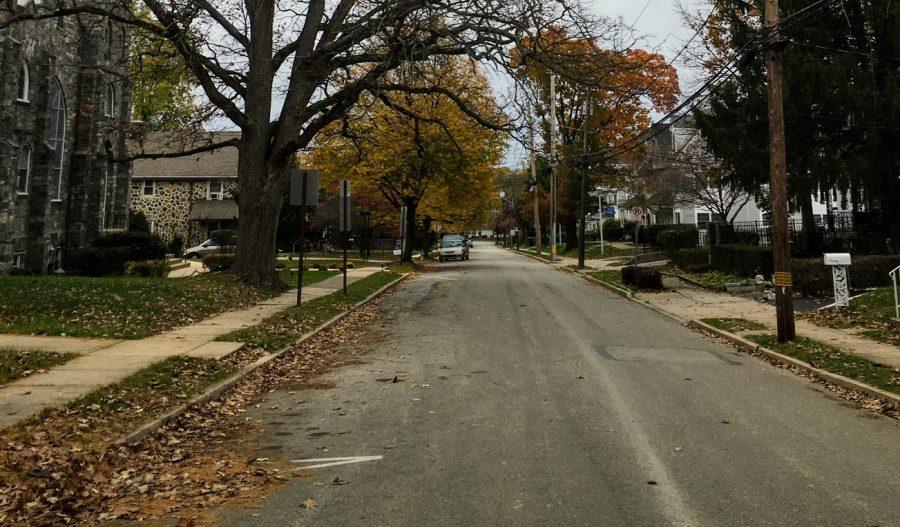Radnor Spaces: Highland Avenue
December 22, 2017
Having grown up in Radnor, or at least spent several years in the district, many of us believe that we could make our way through its streets blindfolded; however, chances are that the majority of students and adults are not familiar with the significance of places we pass by every day. In its “Radnor Places” series, The Radnorite will seek to investigate and present the unique history and sentiment of Radnor Township neighborhoods lying discreetly in our own backyards.
Many Radnor residents are familiar with Odorisio Park, playing soccer on the grassy knoll, sledding down the steep, falling slopes, and engaging in pick-up games of basketball on the newly paved course. Tucked behind this suburban gem lies Highland Avenue. While the street is located near quintessential Wayne spots such as the Radnor Trail, Friends of Radnor Trail Park, popular pizza place Vick and Dean’s, and the Wayne Art Center, it often goes unnoticed.
A Tour of Highland Avenue:
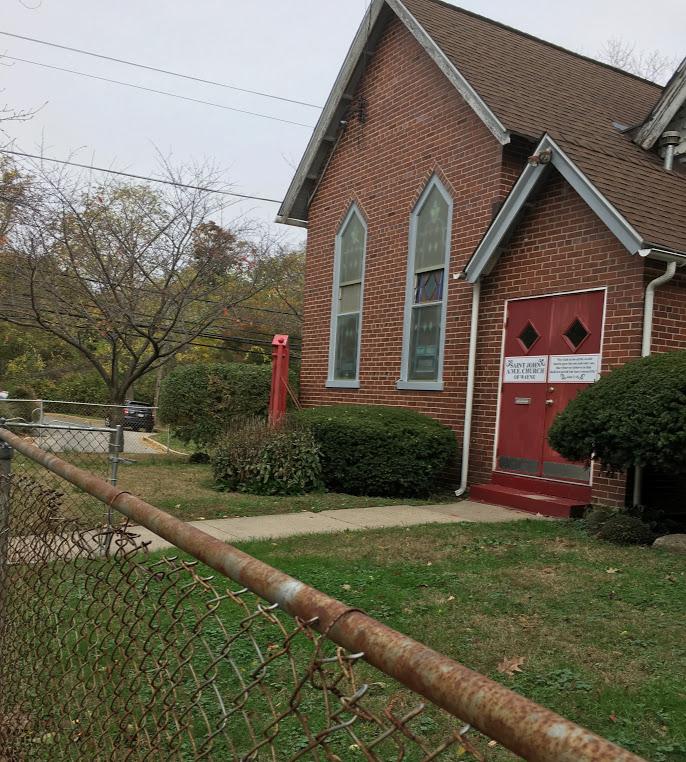
You make your way from the center of Wayne on a chilly, autumn afternoon, approaching Highland Avenue. As you pass the intersection of West Wayne Avenue and Highland Avenue, you spot a rusty, metal net fence between you and the redbrick building of the Saint John A.M.E. Church of Wayne. Its crude appearance clashes with the church’s homely ambience. As you accidentally trip against it, it rattles and you realize its shaky foundation. 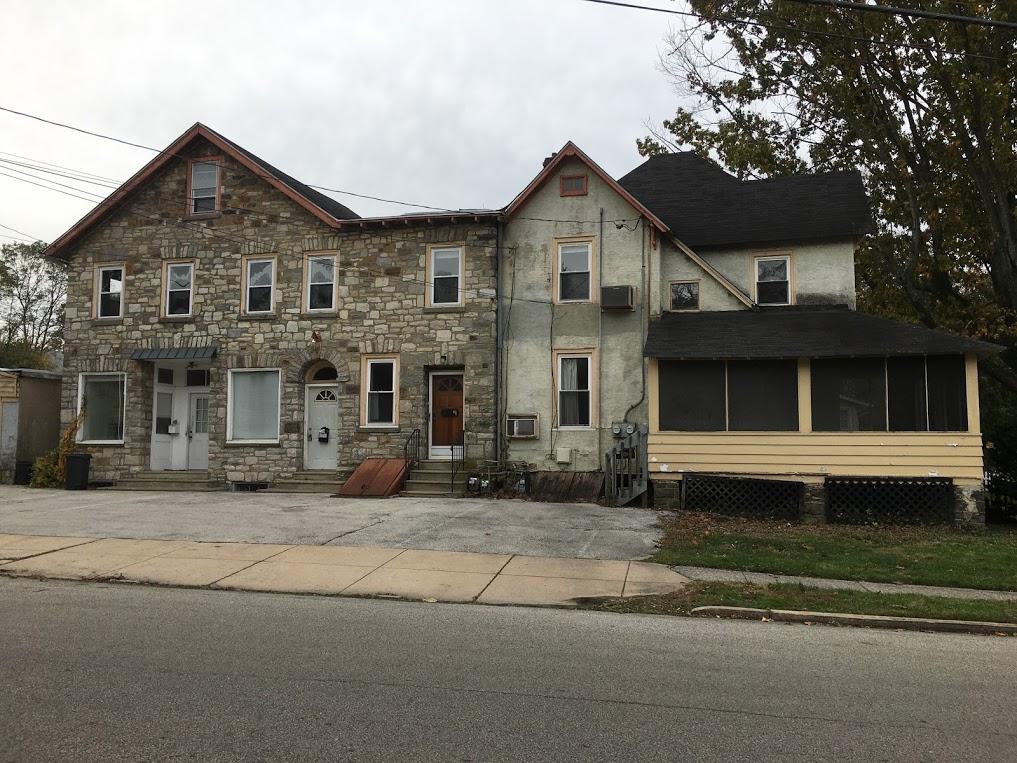
As you turn you see an almost abandoned building with a hodgepodge of materials and multi-colored doors of varying shapes and sizes. A wall of stone clashes with a wall of cement, which meets a wooden sunroom jutting out awkwardly from the corner.
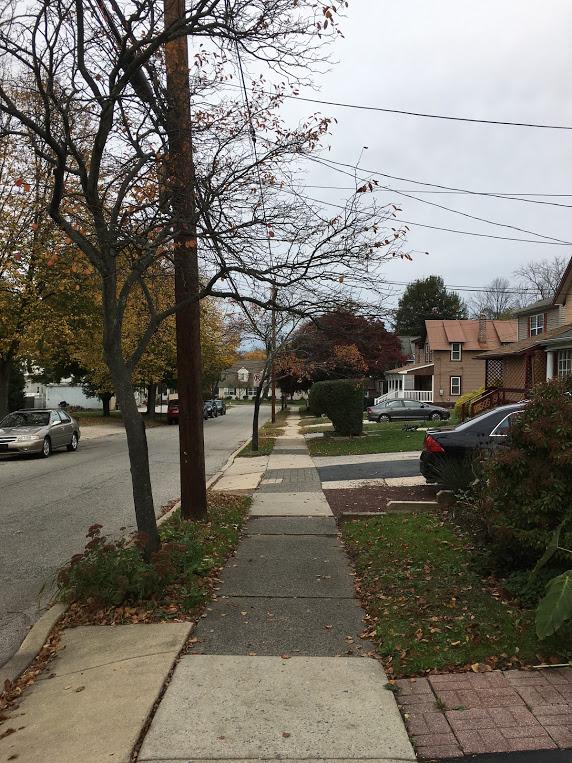 Continuing up the street, you come across an array of houses. Some are the epitome of a quintessential home in Wayne suburbia, well-maintained and surrounded by picturesque lawns with meticulously trimmed shrubbery; others resemble city duplexes or are smaller and worn down with age, with the occasional bike abandoned on an uneven lawn. You consider turning back, feeling a tad unsettled in the currently deserted, dismal street; however, you are in for an unexpected surprise.
Continuing up the street, you come across an array of houses. Some are the epitome of a quintessential home in Wayne suburbia, well-maintained and surrounded by picturesque lawns with meticulously trimmed shrubbery; others resemble city duplexes or are smaller and worn down with age, with the occasional bike abandoned on an uneven lawn. You consider turning back, feeling a tad unsettled in the currently deserted, dismal street; however, you are in for an unexpected surprise.
Turning onto Fairview Avenue, you reach the parking lot of Odorisio Park, and the street fades into the natural beauty of the undulating parkland rolling into the forest. For a moment, you get caught in the breathtaking scenery. But as you continue around the bend, you get pulled back into the rustic surroundings.
You catch out of the corner of your eye an atypical sight for Wayne: a picnic table on its side. It inexplicably rests askew, waiting for someone to pick it up.
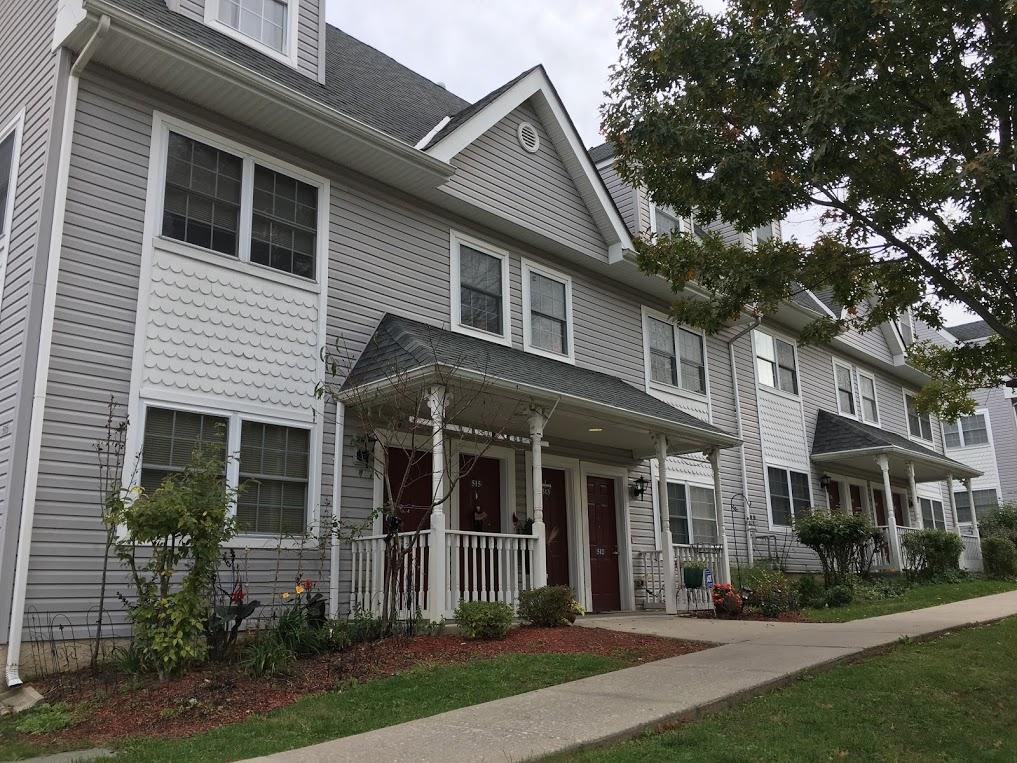 As you look up Highland Avenue, vibrant light-grey buildings embellished with quaint lampposts and lush bushes peek up along the facades of the townhomes. Although they may at first seem to be like any other townhome complex in Wayne, you notice that they have colored-coded doors. These buildings are actually the 51 units that make up the first government-funded, section 8 housing in Pennsylvania, defining the historical significance of Highland Avenue.
As you look up Highland Avenue, vibrant light-grey buildings embellished with quaint lampposts and lush bushes peek up along the facades of the townhomes. Although they may at first seem to be like any other townhome complex in Wayne, you notice that they have colored-coded doors. These buildings are actually the 51 units that make up the first government-funded, section 8 housing in Pennsylvania, defining the historical significance of Highland Avenue.
 When you continue climbing up the mild slope, you pass a glowing, yellow street sign announcing “CHURCH” in big, bold letters, and sure enough, right beyond it is the towering, stone building of the Second Baptist Church of Wayne. Unlike the almost abandoned Saint John AME Church, it is adorned with stained-glass windows, surrounded by a freshly-cut lawn, and complemented by an enchanting, artistic tree. You then find out, though, that the Saint John A.M.E. Church of Wayne is actually being refurbished; its flooring, exterior paint, and backhouse are all being redone, says one of the workers involved. Could the difference in the styles and states of both churches be a reason for this?
When you continue climbing up the mild slope, you pass a glowing, yellow street sign announcing “CHURCH” in big, bold letters, and sure enough, right beyond it is the towering, stone building of the Second Baptist Church of Wayne. Unlike the almost abandoned Saint John AME Church, it is adorned with stained-glass windows, surrounded by a freshly-cut lawn, and complemented by an enchanting, artistic tree. You then find out, though, that the Saint John A.M.E. Church of Wayne is actually being refurbished; its flooring, exterior paint, and backhouse are all being redone, says one of the workers involved. Could the difference in the styles and states of both churches be a reason for this?
Right beside the church, purple doors lead into the house of the Radnor Township Civic Association, which seems to be eerily empty, abandoned, its lawn shroud in a layer of dead grass and fallen leaves. Nonetheless, this building is nowhere near being the most neglected one.
You turn into a hidden all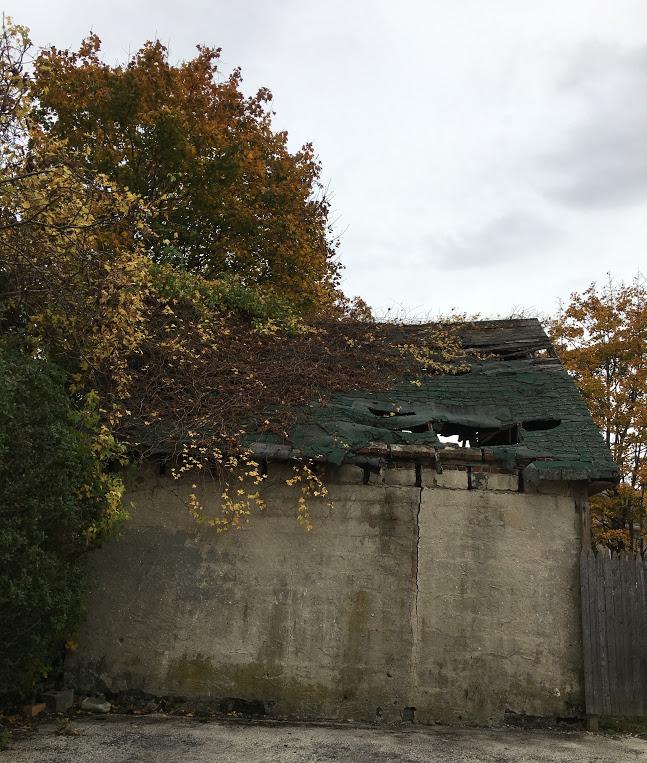 ey parallel to the Radnor Wayne trail to find ruins: a dilapidated garage, crumbling from years of wind and storms. The green exterior material of the roof seems to melt into a gaping hole, as though it were being stretched and sucked into the structure. It resembles the cottage from a terrifying version of Hansel and Gretel and greatly contrasts with the usual “cookie” garage found in Wayne that’s freshly painted and studded with lights and shiny windows.
ey parallel to the Radnor Wayne trail to find ruins: a dilapidated garage, crumbling from years of wind and storms. The green exterior material of the roof seems to melt into a gaping hole, as though it were being stretched and sucked into the structure. It resembles the cottage from a terrifying version of Hansel and Gretel and greatly contrasts with the usual “cookie” garage found in Wayne that’s freshly painted and studded with lights and shiny windows.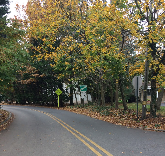
As you follow the curving road, however, Highland Avenue gradually gives way to the protruding streets with overarching trees that guard the upper-middle-class homes, and all of the avenue’s secret oddities and surprises disappear…
A Recollection of Its Notable History:

Radnor Historical Society’s Vice President Lynn Ellis provided some insight into Highland Avenue’s past. According to the Radnor Historical Society’s Bulletin from the spring of 1971, the Highland Homes date back to the early 1900s. As the foundations of the spacious, upper-middle-class houses were laid sporadically throughout Radnor, poorer slums belonging to workers who earned forty dollars a month were ignored by surrounding residents. These places, like Highland Avenue, finally deteriorated to the point where they captured the attention of the community, prompting the establishment of the Neighborhood League of Wayne. Dr. G. L. S. Jameson and Mrs. Charles S. Swalton, the president and vice president of the organization, respectively, determined to transform Highland Avenue—“the worst slum on the Main Line” with substandard sanitation, lighting, and heating—into adequate residential housing for the impoverished civilians.
National reforms instigated under Roosevelt’s administration aided the cause. As a result of the National Industrial Recovery Act of 1933, Wayne’s Neighborhood League’s Housing Committee chair Adolph Rosengarten and the committee’s other members applied for a federal government loan to rebuild the complex in January 1934. Numerous members from the township contributed to the process by offering their skills and monetary donations: engineer Milton Yerkes, architect Arthur I. Megis, and Township Commissioner President Joseph M. Fronefield, III. Ultimately, however, they had to settle for selling Highland Avenue to the federal government, making it one of the Public Works Administration’s forty-nine housing projects in the country.
On September 27, 1935, it was affirmed that the Fritz’s Court housing complex on Highland Avenue would be converted into the Highland homes. Over the course of the next two years, the already run-down homes would be demolished and replaced with new, International-Style buildings with proper heating, plumbing, and even a courtyard. By 1937, the Highland Homes would be put under the control of the Federal Government’s Housing and Urban Development Department and the Delaware County Housing Authority and welcome their new residents, all approved by the Local Advisory Committee.
After the reconstruction of the residential buildings, however, progress in the area did not remain stagnant. Recently, in 2001, plans were made to improve the sewage and visual appeal of the housing and replace the homes with 50 new units and parking spots—an undertaking that would cost 6.5 million dollars. While not everyone may have rushed to claim these homes in years that followed, they were certainly an appealing option for those seeking the benefits of amenities of Radnor township and its commendable school district.
Several years ago, it was announced that the Radnor Township Civic Association building—the Main Line’s sole African-American community center—was under renovation, as well, because of issues with growing mold, electrical problems, and safety concerns. While proponents of the project remained hopeful in the 2015 Main Line Media news article “Radnor Township Civic Association Seeking Help for Building Repairs” that this local gem would be revived and once again serve as an anchor for the members of the encompassing Highland community, given the current neglected state of the building, it remains unclear whether any progress was made or whether the plans were brought to a halt.
Highland Avenue Through the Eyes of a Resident:
We spoke to several residents on Highland Avenue to understand the scope of it. One Radnor High School student whose family has lived on the street for four generations spoke of its evolution. His great grandfather was the pastor of the Second Baptist Church of Wayne, and his grandfather grew up in the house behind the church. He explained that he can tell most people go to the Second Baptist Church because of the community and the way the cars line up along the street.
Before he lived on Highland Avenue, he remembers fondly his trips to visit his grandmother who lived there. Everyone on the street used to be a tight-knit community. Anyone could just walk into each other’s homes for a chat and pound cake. Now people are more isolated and some divisions exist. While it is sad to watch the community vanish, he understands that times change. He reminisces the pickup baseball games at Odorisio park and now-removed merry-go-round.
While Highland Avenue does not coincide with our stereotypical image of “Radnor” suburbia, it does reflect the Radnor attitude of self-pride, nostalgia, and church participation. Like Wayne, Highland Avenue’s rich, century-old history coupled with its unique characters creates a unique atmosphere in need of exploration.
For more information, please visit:
http://radnorhistory.org/bulletins/RHSBulletin.3-1.1971.pdf

